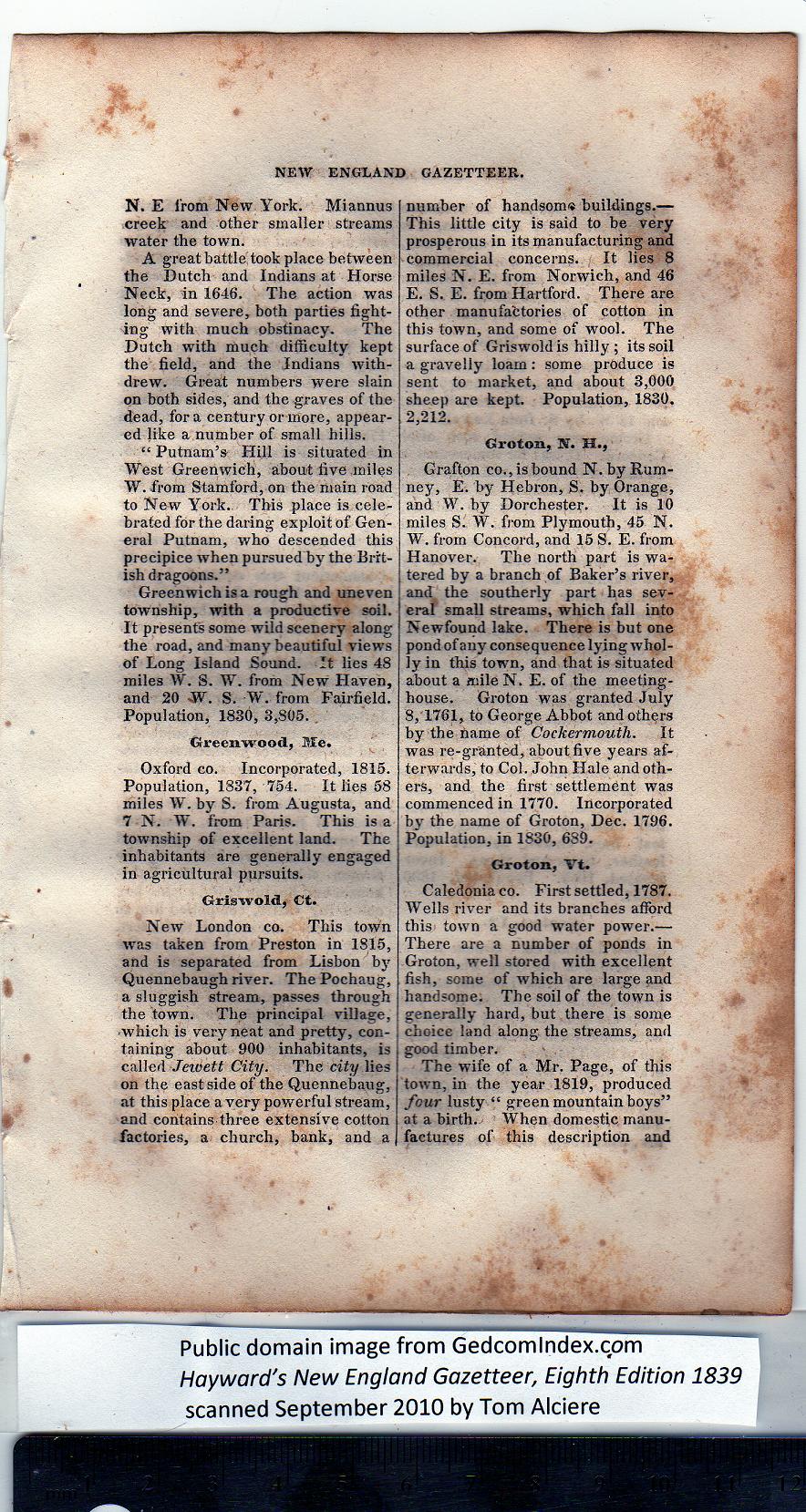|
N. E from New York. Miannus
creek and other smaller streams
water the town.
A great battle took place between
the Dutch and Indians at Horse
Neck, in 1646. The action was
long and severe, both parties fight-
ing with much obstinacy. The
Dutch with much difficulty kept
the field, and the Indians with-
drew. Great numbers were slain
on both sides, and the graves of the
dead, fora century or more, appear-
ed like a number of small hills.
“ Putnam’s Hill is situated in
West Greenwich, about five miles
W. from Stamford, on the main road
to New York. This place is cele-
brated for the daring exploit of Gen-
eral Putnam, who descended this
precipice when pursued by the Brit-
ish dragoons.”
Greenwich is a rough and uneven
township, with a productive soil.
It presents some wild scenery along
the road, and many beautiful views
of Long Island Sound. It lies 48
miles W. S. W. from New Haven,
and 20 W. S. W. from Fairfield.
Population, 1830, 3,SOS.
Greenwood, Me.
Oxford co. Incorporated, 1815.
Population, 1837, 754. It lies 58
miles W. hy S. from Augusta, and
7 N. W. from Paris. This is a
township of excellent land. The
inhabitants are generally engaged
in agricultural pursuits.
Griswold, Ct.
New London ea. This town
was taken from Preston in 1815,
and is separated from Lisbon by
Quennebaugh river. The Pochaug,
a sluggish stream, passes through
the town. The principal village,
which is very neat and pretty, con-
taining about 900 inhabitants, is
called Jewett City. The city lies
on the east side of the Quennebaug,
at this place a very powerful stream,
and contains three extensive cotton
factories, a church, bank, and a,
number of handsome buildings.—
This little city is said to he very
prosperous in its manufacturing and
commercial concerns. It lies 8
miles N. E. from Norwich, and 46
E. S. E. from Hartford. There are
other manufactories of cotton in
this town, and some of wool. The
surface of Griswold is hilly; its soil
a graveliy loam: some produce is
sent to market, and about 3,000
sheep are kept. Population, 1830,
2,212. |
Groton, IV. H.,
. Grafton co., is bound N. by Rum-
ney, E. by Hebron, S. by Orange,
and W. by Dorchester. It is 10
miles S. W. from Plymouth, 45 N.
W. from Concord, and 15 S. E. from
Hanover. The north part is wa-
tered by a branch of Baker’s river,
and the southerly part has sev-
eral small streams, which fall into
Newfound lake. There is but one
pond of any consequence lying whol-
ly in this town, and that is situated
about a mile N. E. of the meeting-
house. Groton was granted July
8,1761, to George Abbot and others
by the name of Cockermouth. It
was re-granted, about five years af-
terwards, to Col. John Hale and oth-
ers, and the first settlement was
commenced in 1770. Incorporated
b\r the name of Groton, Dec. 1796.
Population, in 1830, 689.
Groton, Vt.
Caledonia co. First settled, 1787.
"Wells river and its branches afford
this town a good water power.—
There are a number of ponds in
Groton, well stored with excellent
fish, some of which are large and
handsome. The soil of the town is
generally hard, but there is some
choice land along the streams, and
good timber.
The wife of a Mr. Page, of this
town, in the year 1819, produced
four lusty “ green mountain boys”
at a birth. When domestic manu-
factures of this description and |
